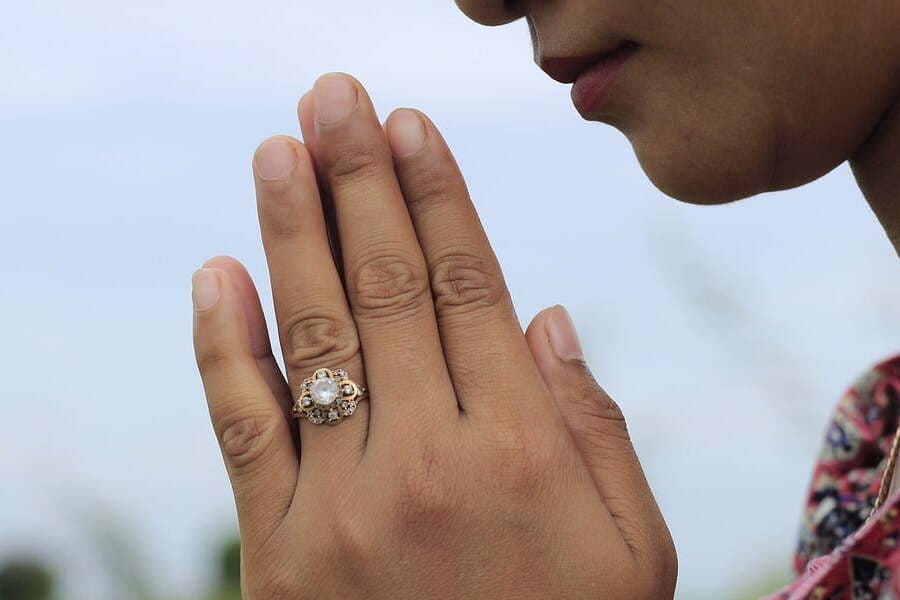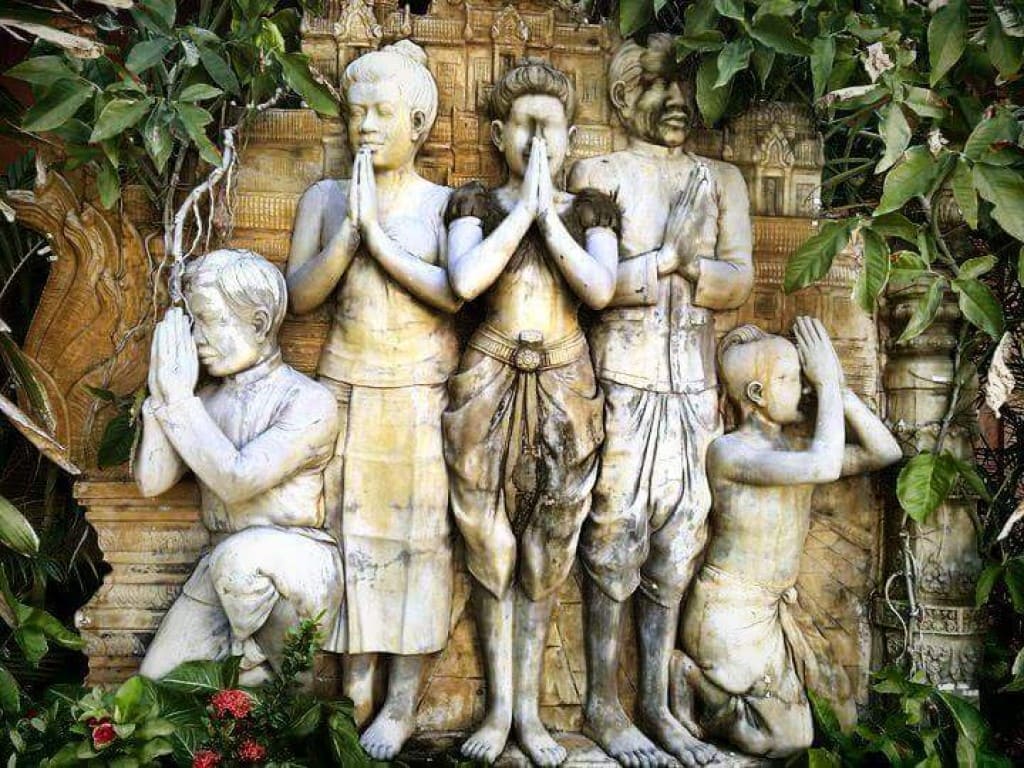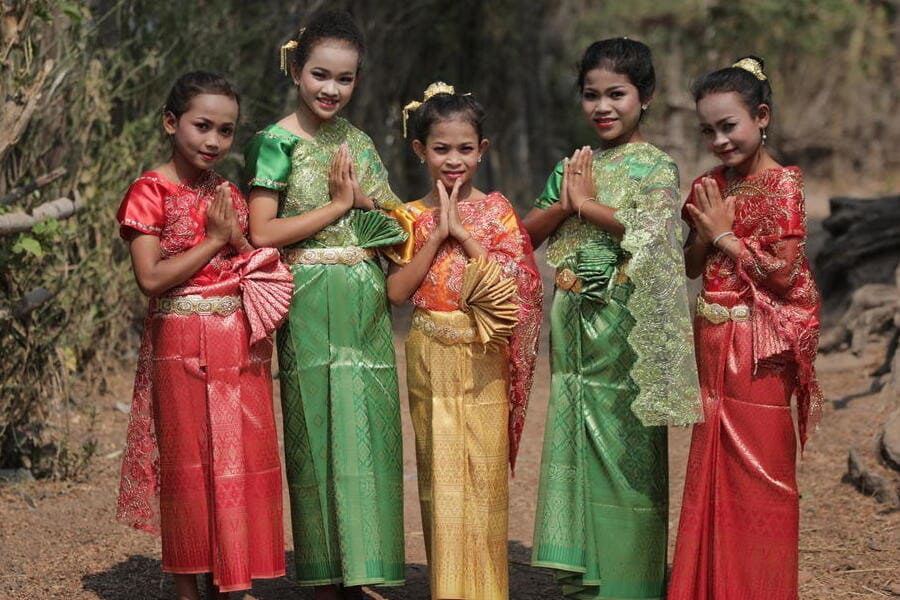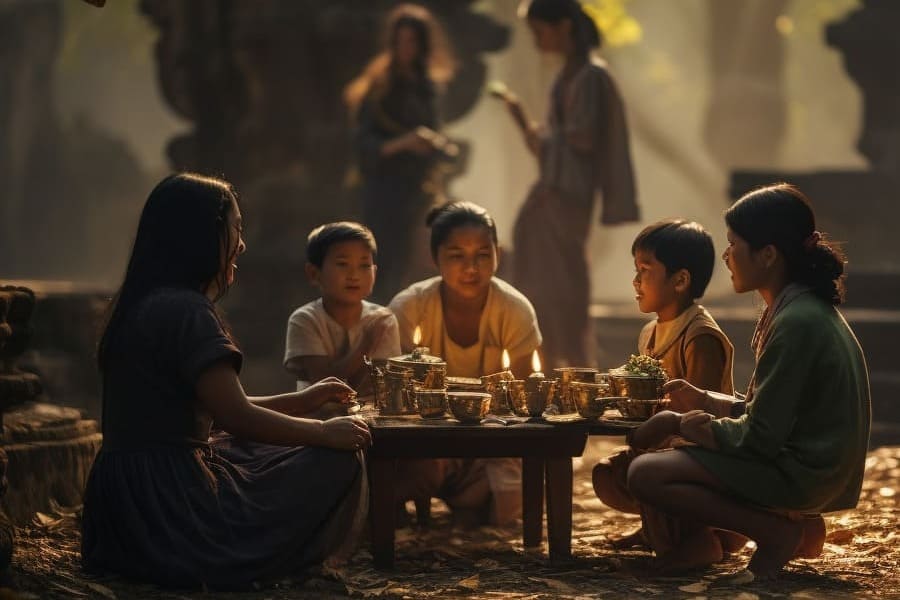Embark on a journey of cultural discovery with cambodia tours as we delve into the intricacies of Cambodian etiquette. In this beginner's guide, we'll navigate the nuances of social customs and norms in Cambodia, helping you navigate interactions with grace and respect. From traditional greetings to dining etiquette and beyond, understanding Cambodian etiquette is essential for travelers seeking to immerse themselves fully in the rich tapestry of Cambodian culture.
Contents
An Overview of Cambodian Etiquette and the Importance of its in Cambodian Society
Cambodian etiquette is deeply rooted in the cultural traditions and values of Cambodian society, playing a significant role in shaping social interactions, relationships, and everyday life. Understanding and observing Cambodian etiquette is essential for visitors and residents alike, as it reflects respect, politeness, and harmony in interpersonal relationships.
One of the most fundamental aspects of Cambodian etiquette is the importance placed on respect for others, particularly elders, authority figures, and individuals of higher social status. Showing deference and humility towards elders is deeply ingrained in Cambodian culture, with gestures such as bowing, using formal language, and addressing elders with honorific titles being common practices.
Greetings and introductions are also important elements of Cambodian etiquette, reflecting the value placed on interpersonal relationships and community bonds. The traditional greeting in Cambodia is the Sampeah, a gesture of respect where the palms are pressed together in front of the chest, accompanied by a slight bow. Saying "Chum reap sour" (hello) or "Som pas" (goodbye) is also customary when meeting or parting ways with others.
Dining etiquette is another area where Cambodian etiquette is prominently observed. Meals are often shared family-style, with everyone sitting together and serving themselves from communal dishes. It is customary to wait for elders or guests to start eating before beginning a meal, and using chopsticks or utensils with finesse is considered respectful.
Respect for religious customs and traditions is also an integral part of Cambodian etiquette. When visiting temples or pagodas, visitors are expected to dress modestly and behave respectfully, removing shoes before entering sacred spaces and refraining from loud or disruptive behavior.
Cambodian Etiquette Guide
Greeting Customs and Gestures in Cambodian Etiquette
Do’s:
Sampeah Gesture: When greeting someone in Cambodia, it is customary to perform the Sampeah gesture. This involves pressing your palms together in a prayer-like position in front of your chest and bowing slightly. The higher you raise your hands, the more respect you show, especially to elders or authority figures.
Use Formal Language: Address people with respect by using formal language, particularly when speaking to elders or individuals of higher social status. Use honorific titles such as "Lok" for men and "Lok Srey" for women followed by their given name.
Smile and Maintain Eye Contact: Smile genuinely when greeting someone, as it is a sign of warmth and friendliness. Maintain eye contact, but avoid prolonged staring, as this can be considered impolite.
Accept Hospitality: If offered food, drink, or other forms of hospitality, it is polite to accept graciously, even if you do not intend to partake. Refusing hospitality may be seen as disrespectful or rude.
Return the Greeting: Always reciprocate greetings with equal warmth and respect. If someone offers you a Sampeah gesture or says "Chum reap sour" (hello), respond in kind.
Don’ts:
Touching or Physical Contact: Avoid physical contact, such as hugging or kissing, when greeting someone in Cambodia, especially if you are meeting them for the first time. Cambodians generally prefer to maintain a respectful distance.
Using Informal Language: Refrain from using informal language or slang when addressing others, particularly elders or individuals of higher social status. Always use polite and respectful language, even with peers or acquaintances.
Turning Your Back: Avoid turning your back on someone, especially elders or authority figures, as this is considered disrespectful. When leaving, take a few steps backward while maintaining eye contact before turning away.
Pointing Feet: Do not point your feet at people or religious objects, as this is considered impolite in Cambodian culture. When sitting, keep your feet tucked under you or positioned away from others.
Interrupting Conversations: Avoid interrupting conversations or speaking out of turn, particularly when elders or authority figures are speaking. Wait for an appropriate moment to contribute to the conversation.
Dress Code and Appearance in Cambodian Etiquette
Do’s
Dress Modestly: When visiting temples, pagodas, or other religious sites, dress modestly out of respect for the sacredness of the place. This typically means covering your shoulders, chest, and knees. Loose-fitting clothing made of lightweight fabrics like cotton is ideal for staying cool in Cambodia's warm climate.
Wear Conservative Attire: In general, it's a good idea to dress conservatively in Cambodia, especially in rural or traditional areas. Avoid clothing that is too revealing or tight-fitting, as this may be seen as disrespectful or inappropriate.
Remove Shoes When Entering Homes or Temples: It's customary to remove your shoes before entering someone's home, as well as before entering temples or pagodas. This shows respect for the cleanliness of the space and the customs of the culture.
Wear Conservative Swimwear: When visiting beaches or swimming pools in Cambodia, opt for conservative swimwear that covers your torso and thighs. Bikinis and swim trunks are acceptable at tourist resorts and beach clubs, but more coverage may be appreciated in more conservative or rural areas.
Don’ts:
Wear Revealing Clothing: Avoid wearing clothing that is too revealing or exposes too much skin, particularly when visiting religious sites or rural communities. This includes short shorts, low-cut tops, and tight-fitting clothing.
Wear Shoes Inside Homes or Temples: It's considered rude to wear shoes inside someone's home or inside religious buildings like temples or pagodas. Always remove your shoes before entering and place them neatly outside the entrance.
Display Affection Publicly: Public displays of affection, such as kissing or hugging, are not common in Cambodian culture and may be seen as inappropriate or disrespectful. It's best to keep physical affection private and reserved for close friends or family members.
Wear Offensive Clothing: Avoid wearing clothing with offensive language, symbols, or imagery, as this may be considered disrespectful or insensitive. Be mindful of the cultural sensitivities of the country and dress appropriately out of respect for local customs and beliefs.
Table Manners and Dining Cambodian Etiquette
Do’s
Wait for the Host to Start Eating: In Cambodian culture, it is customary to wait for the host or the most senior person at the table to start eating before you begin your meal. This demonstrates respect and politeness towards the host and other guests.
Use Utensils Appropriately: When dining in Cambodia, use utensils such as spoons and forks to eat your meal. Chopsticks are also commonly used, particularly for noodle dishes and rice. Hold chopsticks properly and avoid sticking them upright in your bowl, as this resembles a funeral ritual.
Share Food Family-Style: Cambodian meals are often served family-style, with several dishes placed in the center of the table for everyone to share. Take small portions of each dish and avoid taking more than you can eat to ensure that there is enough food for everyone.
Say "Soursdey" Before Eating: Before starting your meal, it is polite to say "Soursdey" (bon appétit) to your dining companions as a way of wishing them a good meal. This simple gesture shows consideration for others and adds warmth to the dining experience.
Express Appreciation: If you enjoy the food or hospitality, express your appreciation to the host or cook. Saying "Ch'nganh" (delicious) or "Arkun" (thank you) is a polite way to show gratitude for the meal.
Don’ts:
Start Eating Before the Host: Wait until the host or the most senior person at the table starts eating before you begin your meal. Starting before them may be seen as disrespectful or rude.
Leave Food Uneaten: It is considered wasteful and impolite to leave food uneaten on your plate in Cambodian culture. Take only what you can eat and try to finish everything to show appreciation for the meal and the effort that went into preparing it.
Burp or Make Loud Noises: Burping or making loud noises while eating is considered impolite in Cambodian culture. Practice good table manners by eating quietly and avoiding disruptive behavior.
Reach Across the Table: Avoid reaching across the table to grab food or utensils, as this may disrupt other diners and is considered impolite. Instead, ask someone to pass the dish or utensil to you or wait until it comes within your reach.
By understanding and respecting these practices, you can foster positive interactions and build meaningful connections with the Cambodian people. Whether you are visiting temples, dining with locals, or navigating daily interactions, adhering to these guidelines will help you navigate Cambodian society with grace and sensitivity. Embrace the rich cultural heritage of Cambodia with an open mind and respectful demeanor, ensuring your experiences are enriching for both you and the communities you encounter.




